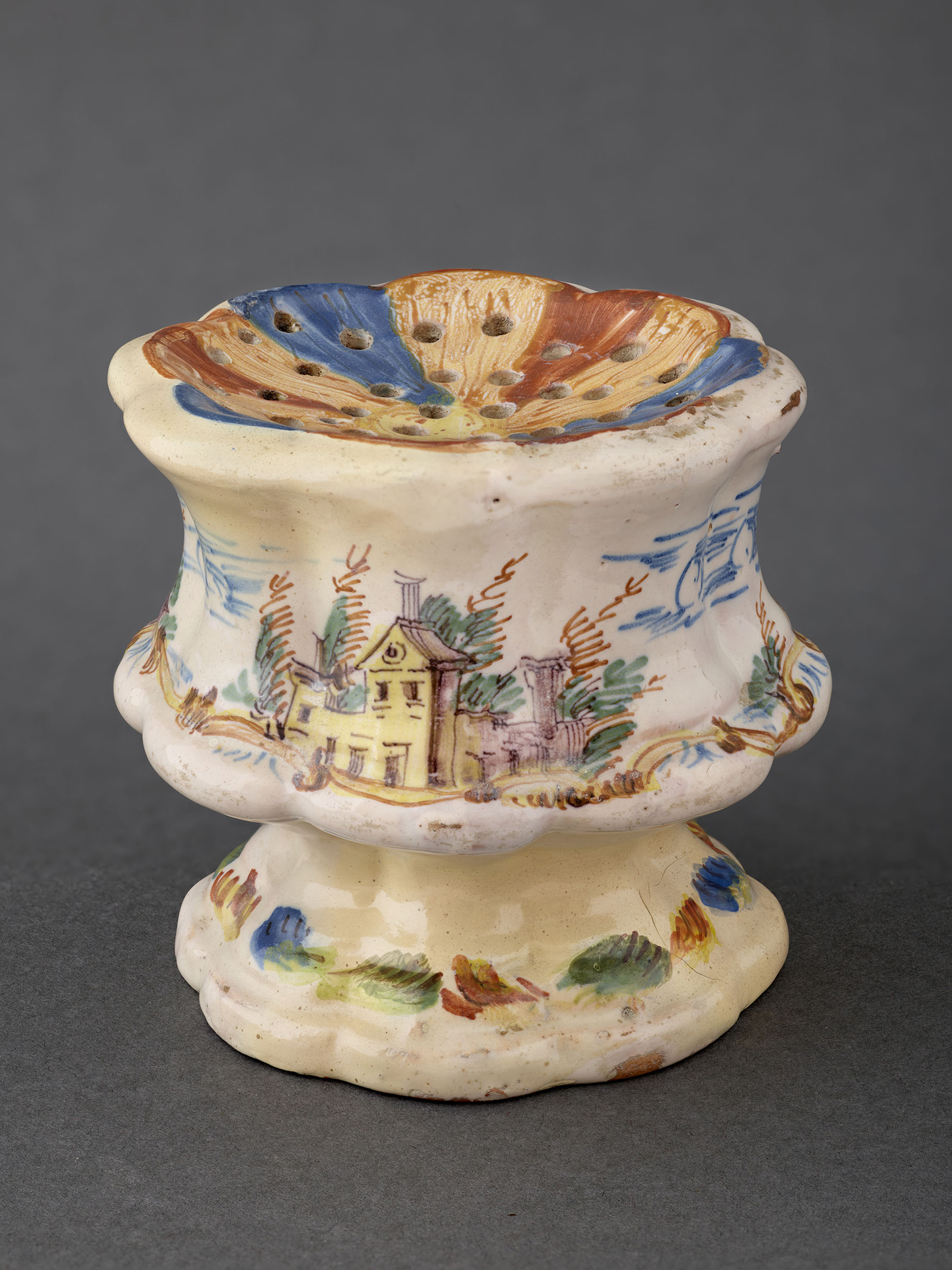
Manufactura de Alcora
Sandbox
19th century
WORK INFORMATION
Ceramic, polychrome earthenware, height: 8.5 cm
The Alcora manufactory was founded in 1727 by the 9th Count of Aranda on land he owned in what is now the province of Castellón. The aim was to create a luxury earthenware and porcelain factory that would compete with foreign manufactories. Royal privileges, including tax exemption on the export of pieces and the free entry of materials from abroad, allowed this manufactory to operate until the middle of the 19th century despite the fact that it barely made any profits.
Throughout its existence, the factory became a model of organisation and a point of reference in terms of aesthetics thanks to the recruitment of foreign specialists, artists and “secretists” who claimed to know the secret of porcelain manufacture. In addition, the creation of an apprentice academy enabled the manufactory to continue to provide top quality production.
Stylistically speaking, this baluster-shaped sandbox with a gadrooned goblet base is decorated with roughly painted architectural motifs and rocailles on a poor-quality, poorly applied enamel. It is possibly a late production, from the time of the Girona brothers, who leased the factory in 1850 and acquired it in 1858. During the years that the Girona family owned the establishment until it was sold in 1895, they were unable to do anything to restore its lost splendour. Production lost the artistic quality and refinement that had characterised the Alcora manufactory. During this period, in addition to producing earthenware decorated with prints, models from previous periods were readapted.

